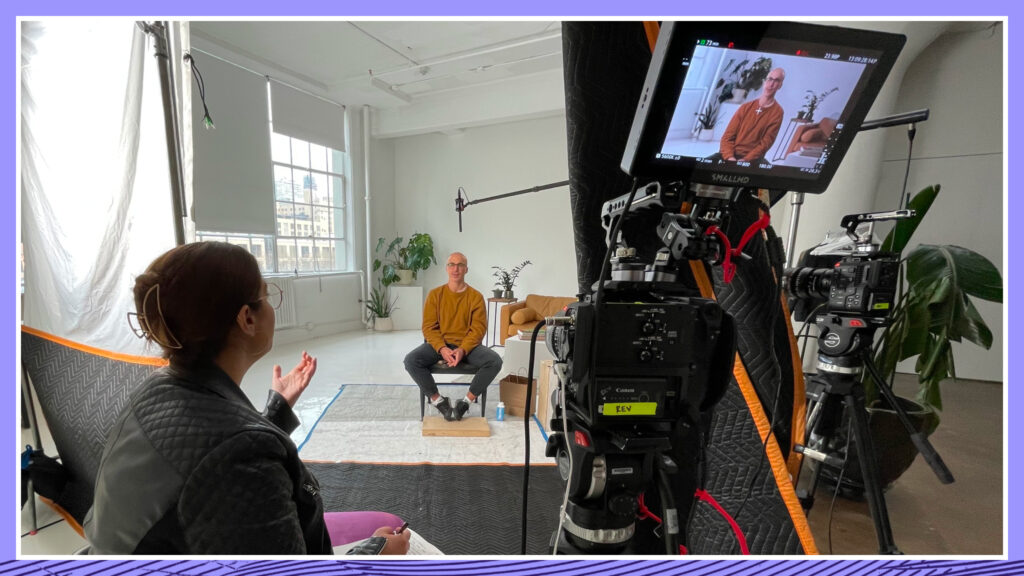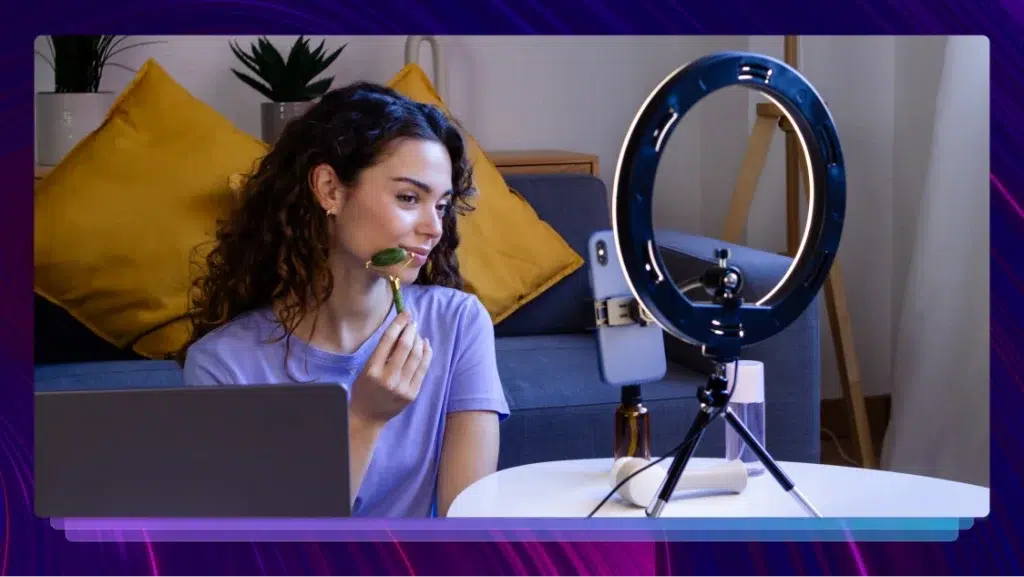4 Tips for Pre-Interviewing Your Case Study Talent
Interviewing is an emotional endeavor. Excitement, nervousness, stress; whether you’re an experienced inquisitor or a public figure who has sat for

Interviewing is an emotional endeavor. Excitement, nervousness, stress; whether you’re an experienced inquisitor or a public figure who has sat for hundreds of interviews, there will always be butterflies fluttering on both sides of the camera.
If you’re not a professional interviewer or the subject isn’t used to the bright lights, those butterflies can increase exponentially. And too many flaps of those wings can lead to an awkward, stilted exchange in which no one….soars.
If you’re tired of the butterfly metaphor already, don’t worry. I am too. Let’s soar on.
A Pre-Interview Prepares Both Sides of the Camera
Being on camera can be overwhelming and being behind the camera can be even moreso if you’re not prepared. But you can eliminate a pile of those jitters with a simple conversation before the main event. I call them pre-interviews, but that might be too formal of a title. Think of it more as a conversation; a level-setting chat where both sides get to better understand each other’s goals, what the day will entail, how your subject might come across on camera and -most importantly- how your personalities mesh.
This is why we’ve put together a few tips for conducting a killer pre-interview. Read on!
1. Laptop to Laptop Works, Too
First, don’t hesitate to do it over Zoom (or whatever other meeting app you prefer) as opposed to face-to-face. Most people have become rather comfortable with video conferencing (old school reference!) in the last few years so your subject may automatically be put at ease. The only danger here is that you don’t get a true sense of a person when they’re looking into a laptop camera. However, there is a camera involved, so you’ll get at least a look at certain tics or mannerisms. All told, Zoom is a great way to break some ice, and it’s very easy to record the session for review or transcription. We love using Rev for transcription because it’s quick, easy, inexpensive and thorough. All of your transcripts and audio files are saved in one place, which can tidy up even the most disorganized interviewer’s workspace.
2. Walk-and-Talk For the Win
If you opt to conduct an in-person pre-interview, strongly consider a setting that doesn’t feel “staged.” Some people will clam up in any face-to-face session that feels like an interview. Seeing your notebook or tape recorder or any other reminder that they’re the subject can cause nerves to fray and lips to close. Depending on the site, a walk-and-talk is a good way to set nerves at ease. If you’re in their home, maybe head into the backyard. Have them give you a tour. If you have a b-roll shoot scheduled, maybe invite your subject along. Let them “in” to see the process and they might feel more comfortable. This is another place that transcription can be important. In a less formal setting, details and ideas might be missed, so using the Rev app to record and transcribe can let you focus on the person in the moment, allowing you to shape your story later.
3. Don’t Show All Your Cards, But Deal A Few
Don’t ask all your interviews questions verbatim during the warmup session, but certainly ask a few that head in the same directions. If you run through all your official questions now, you run the risk of trying to unorganically replicate the same answers, and your subject might feel like they’re reading from a script attempting the same. A few of the actual questions won’t hurt, but it’s better to ask questions that are close; maybe questions that didn’t make your final cut, even. This way, you’ll get a sense of what the subject is eager to talk about, what gets them animated or enthusiastic. You can also take notes about new directions you might want to take the on-set interview.
4. Become the Subject For a While
Let your subject ask you some questions. Not just about the nuts and bolts of the interview process, but about anything. The more your pre-interview feels like an honest back-and-forth conversation, the more you’ll learn about them and the more they’ll be comfortable with you. That said, this is also a great opportunity to go over the actual details of the day. Wardrobe, makeup, arrival times; anything that is exclusively part of the on-camera interview process should be part of this convo. The fewer surprises they have on the day, the more natural they’ll be.
The primary reason to conduct the pre-interview is to get a “real” reaction from your subject. This is your chance to build a relationship with your subject in a less formal setting, which will help them trust you and be a more honest and open during the primary interview. If you make it clear to them that the actual interview won’t be incredibly different from this conversation, they’ll be more at ease then and now.
And so will their butterflies.
Heading
Heading 1
Heading 2
Heading 3
Heading 4
Heading 5
Heading 6
Lorem ipsum dolor sit amet, consectetur adipiscing elit, sed do eiusmod tempor incididunt ut labore et dolore magna aliqua. Ut enim ad minim veniam, quis nostrud exercitation ullamco laboris nisi ut aliquip ex ea commodo consequat. Duis aute irure dolor in reprehenderit in voluptate velit esse cillum dolore eu fugiat nulla pariatur.
Block quote
Ordered list
- Item 1
- Item 2
- Item 3
Unordered list
- Item A
- Item B
- Item C
Bold text
Emphasis
Superscript
Subscript

Subscribe to The Rev Blog
Sign up to get Rev content delivered straight to your inbox.




